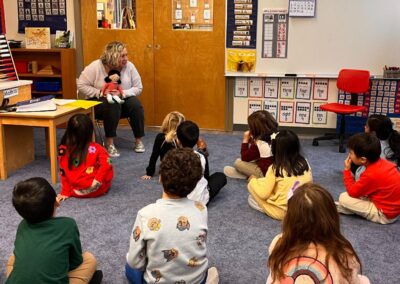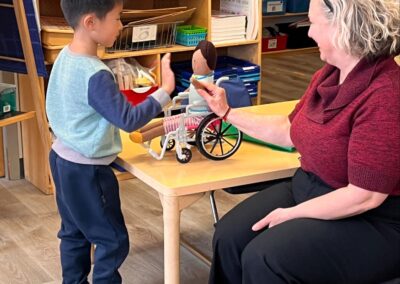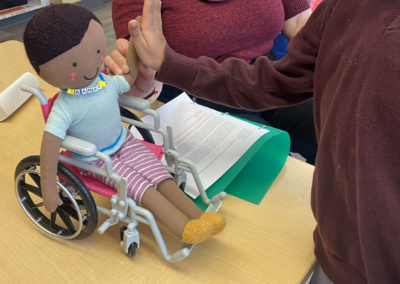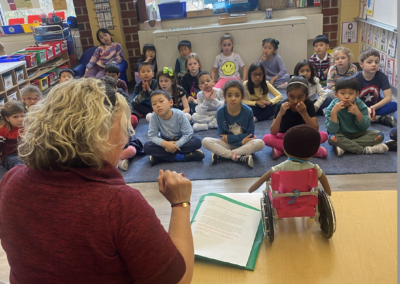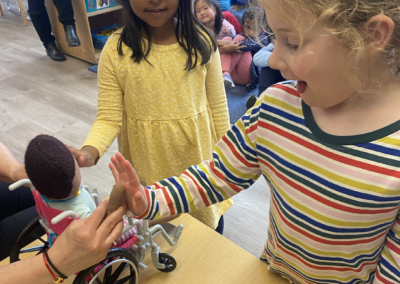
Kindergartners were introduced to Persona Dolls as a way to teach children social-emotional skills such as empathy, problem-solving, conflict resolution, and anti-bias. Children learn self-awareness and build positive social identities along with confidence and compassion.
The students listen to the doll’s stories and engage in a class discussion sharing their personal thoughts and experiences, often advising the doll on ways to handle a difficult situation or address a problem they have. The students participate in activities that further develop their understanding of others and deepen their empathy. Kindergartners have listened, danced, and paraded around the classroom as they embraced cultural music represented by Mya, an African American and Hispanic doll. Students wrote and illustrated a classroom book titled, Our Family Traditions highlighting their own family cultures and traditions. The students learned about Nia, a persona doll who identifies as a Black girl with a gluten allergy and enjoyed a gluten-free snack after hearing her story.
As each doll is introduced, they become a part of the classroom where they are seen by the students. These dolls are different from dolls the children play with as the personas of these dolls do not change like dolls in a dramatic play area.
In the photo above, Mrs. Fiore introduces Khamla to Mrs. Cali’s kindergarten class. Khamla is a Chinese and Laos doll. Khamla is sad because she is hungry by lunchtime, but she doesn’t want to open her thermos and eat her Khao Niew (Sticky Rice) and Lam (Lao Stew) that her grandmother made because her tablemates said, “Ew, that smells funny! What is that?” The kindergartners were asked, “What should Khamla do? What would you do if that happened to you? How do you think Khamla felt? What could you do if someone said those things to you?” The students engaged in a thoughtful, problem-solving discussion.
Each doll was carefully chosen, and their identities and stories were thoughtfully crafted. The dolls have a variety of skin colors, hair types, and features true to their ethnicity. Each persona doll has a name, age, family dynamic, residence, likes, and dislikes. These remain as constant as those characteristics do for real children in the classroom and whose life experiences unfold just like real children. These ingredients help the children connect to the dolls and make them and the stories they tell much more powerful.

